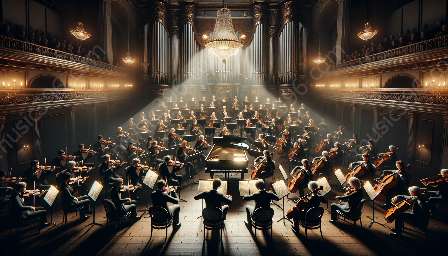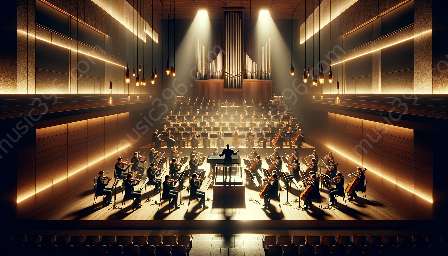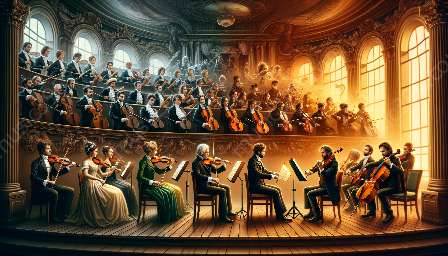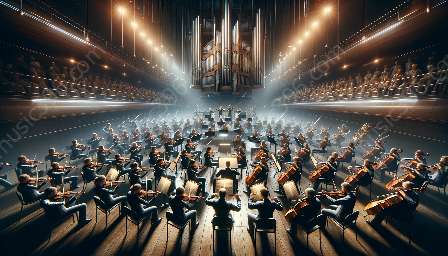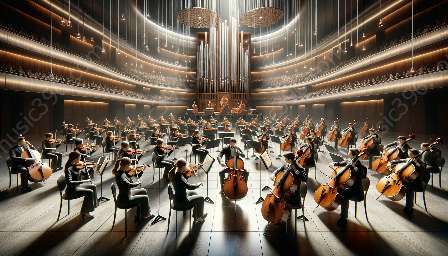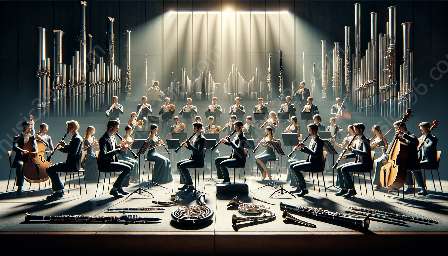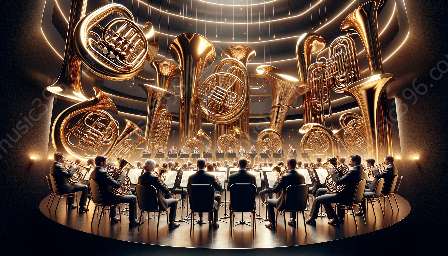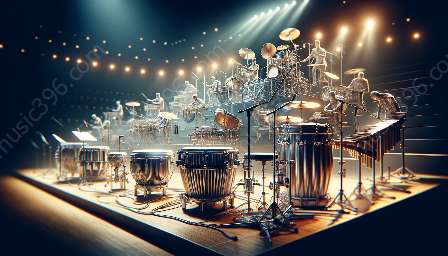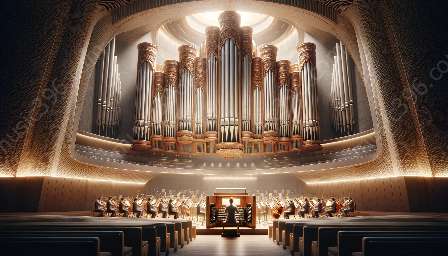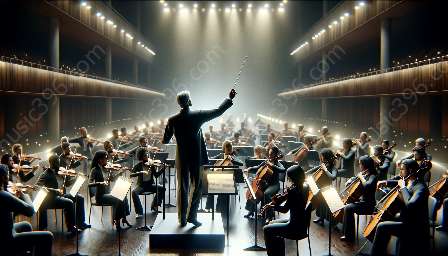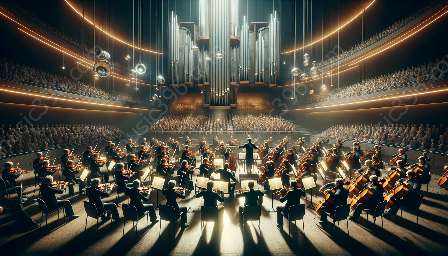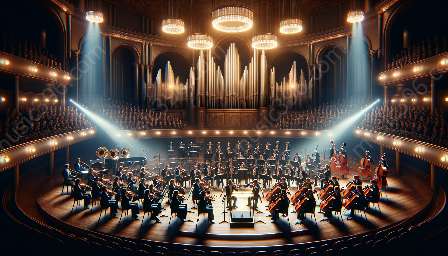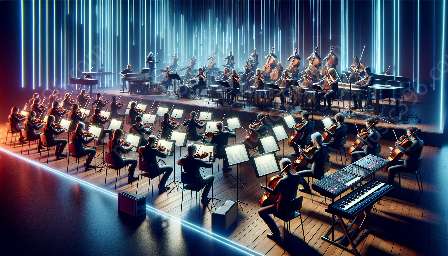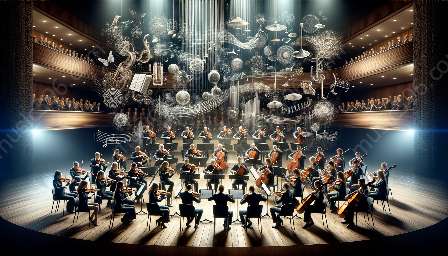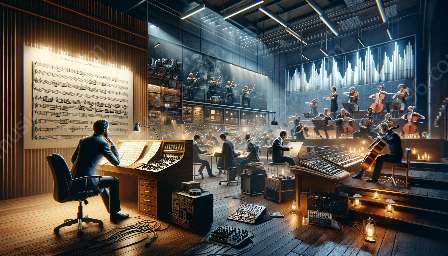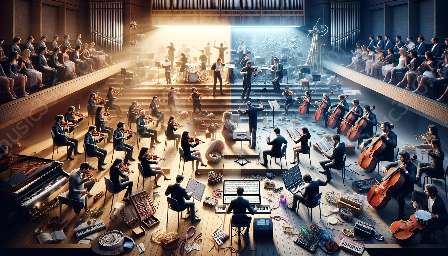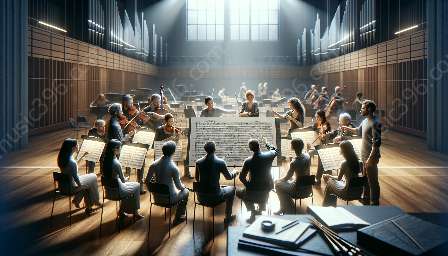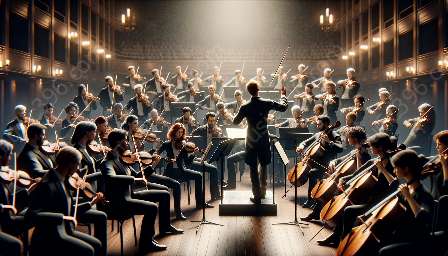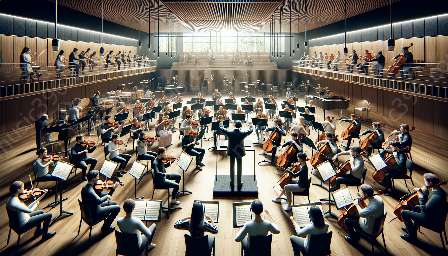Orchestration for Film and TV: Navigating Budget and Time Constraints
When it comes to creating music for film and television, the role of orchestration becomes crucial in translating the director's vision into a captivating auditory experience. However, orchestration for visual media often faces challenges posed by budget and time constraints. This topic cluster explores the impact of these constraints and provides insights into effectively navigating them to achieve exceptional musical compositions.
The Crucial Role of Orchestration
Orchestration involves arranging and structuring musical compositions for performance by an orchestra or other ensemble. In the context of film and TV, orchestration plays a fundamental role in enhancing storytelling, evoking emotions, and creating a powerful connection between the audience and the visual narrative. It involves the careful selection of instruments, distribution of musical elements, and coordination of various musical components to complement and elevate the on-screen action.
Challenges Posed by Budget Constraints
One of the primary challenges in orchestrating music for film and TV is the limitation imposed by budget constraints. Allocating resources for hiring and recording live musicians, renting studio space, and acquiring high-quality instruments can be financially demanding. Limited budgets may also restrict the composer's ability to achieve the desired grandeur and complexity in the musical arrangement, potentially compromising the overall impact of the soundtrack.
Strategies for Mitigating Budgetary Limitations
To overcome budget constraints, composers and orchestration professionals often employ innovative techniques such as virtual orchestration and sample libraries. These tools enable them to create realistic and compelling orchestral sounds within a more economical framework. Additionally, collaborating with talented solo instrumentalists or smaller ensembles can provide cost-effective alternatives without compromising the artistic integrity of the composition.
Navigating Time Constraints in Orchestration
Time is another critical factor that significantly influences the orchestration process for film and TV projects. Tight production schedules and demanding deadlines can exert pressure on composers and orchestrators, requiring them to efficiently translate musical concepts into fully orchestrated scores within limited time frames.
The Art of Efficient Orchestration
To succeed in the face of time constraints, orchestration professionals adopt strategies such as meticulous planning, streamlined communication with directors and producers, and leveraging technology to expedite the compositional and orchestration processes. They may also prioritize the most impactful musical elements to focus their time and resources effectively, ensuring that the essence of the score remains uncompromised despite time limitations.
Effective Collaboration and Communication
Amidst budget and time constraints, effective collaboration and communication between composers, orchestrators, directors, and producers are pivotal in aligning artistic vision with practical considerations. Clear and transparent discussions regarding budget allocations, project timelines, and creative objectives facilitate the development of solutions that accommodate constraints while preserving the artistic integrity of the musical composition.
Embracing Innovation in Orchestration
The evolution of technology has considerably influenced orchestration for film and TV, offering diverse tools and resources that enable orchestration professionals to navigate budget and time constraints more effectively. From advanced sample libraries and virtual instruments to digital audio workstations (DAWs) and remote collaboration platforms, embracing innovation empowers composers and orchestrators to create rich, immersive musical experiences while optimizing resource utilization.
Striking a Balance: Quality, Efficiency, and Constraints
Ultimately, the orchestration process for film and TV necessitates a delicate balance between preserving the artistic quality and ensuring efficiency within budget and time limitations. Striving to achieve this equilibrium demands a combination of creative ingenuity, resourceful problem-solving, and a deep understanding of the symbiotic relationship between music and visual storytelling.
Conclusion
The impact of budget and time constraints on orchestration for film and TV underscores the multidimensional challenges faced by composers and orchestrators in bringing cinematic musical scores to life. By embracing innovation, strategic decision-making, and open collaboration, professionals in orchestration can overcome these constraints and deliver captivating musical compositions that elevate the visual narrative, regardless of the challenges presented.

